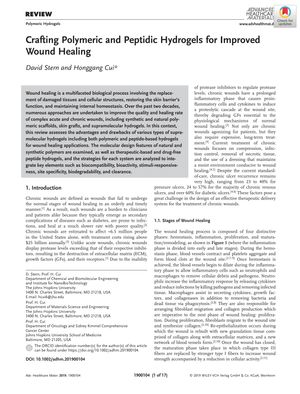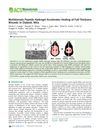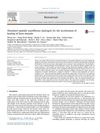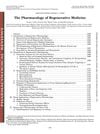Crafting Polymeric and Peptidic Hydrogels for Improved Wound Healing
March 2019
in “
Advanced Healthcare Materials
”
hydrogel polymeric hydrogel peptidic hydrogel RGD peptide UPy-modified hydrogelators PLGA silk fibroin gentamicin sulfate rhEGF silver hydrogel dressings natural polymers in situ injectable nanocomposite hydrogel curcumin dextran hydrogel self-assembling peptide hydrogel RGD UPy silver dressings injectable hydrogel curcumin hydrogel dextran self-assembling hydrogel

TLDR Advanced hydrogel systems with therapeutic agents could greatly improve acute and chronic wound treatment.
The document reviews the use of polymeric and peptidic hydrogels in wound healing, emphasizing their potential to improve outcomes for chronic wounds, which affect 6.5 million people in the U.S. and cost over $25 billion annually. It discusses the importance of hydrogel properties such as biocompatibility, bioactivity, and stimuli-responsiveness, and highlights specific examples like RGD peptide sequences for cell adhesion, UPy-modified hydrogelators for drug delivery, and scaffolds made from PLGA/silk fibroin or loaded with gentamicin sulfate and rhEGF. The review also notes the effectiveness of silver hydrogel dressings for burn wounds, natural polymers in FDA-regulated products, and an in situ injectable nanocomposite hydrogel containing curcumin for dermal wound repair. Additionally, it describes a dextran hydrogel that accelerates wound closure in severe burns and a self-assembling peptide hydrogel that promotes healing in diabetic mice. The document concludes that advanced hydrogel systems, especially those incorporating therapeutic agents, could significantly enhance the treatment of acute and chronic wounds.



